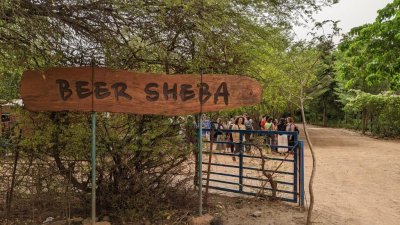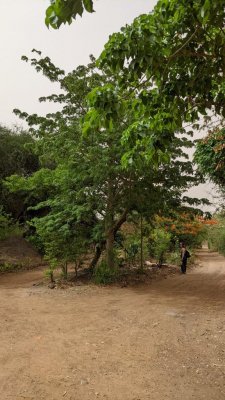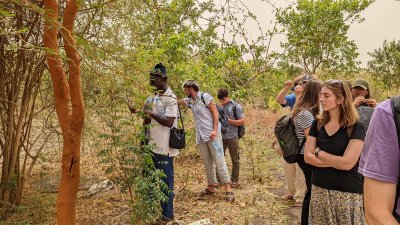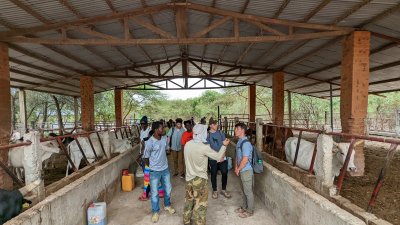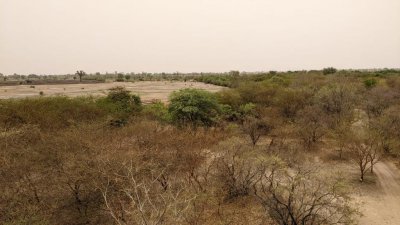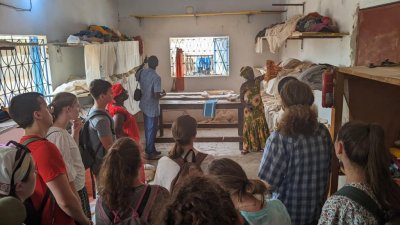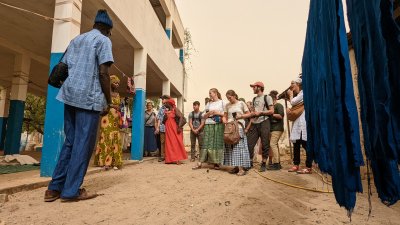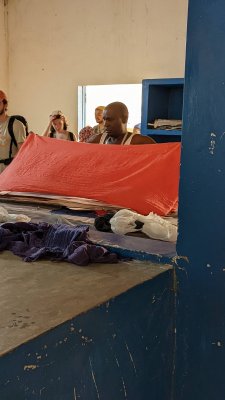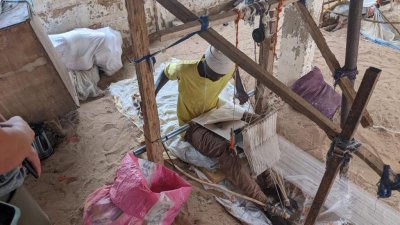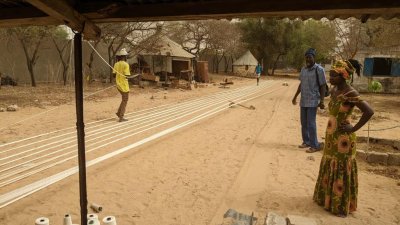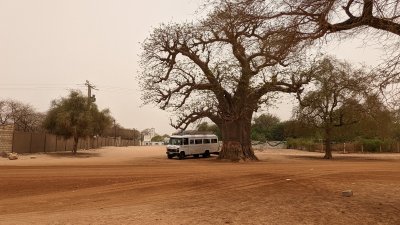Retrospective: Beer-Sheba and Ndem Development Projects
by Samuel Stoner-Eby and Sam Scheele
In our fifth week, we visited two development projects to the southeast of Thiès . The Beer Sheba Project is a Christian agricultural education project. Ndem is a community NGO. Ndem has a variety of projects including weaving, gardens, and other small income generating activities. Both of these projects contained similar goals of community development, and ecological renewal.
Beer Sheba Project
Beer Sheba is a community development project about 70 kilometers southeast of Thiès. It is an agricultural renewal and education facility. We were all impressed walking through the gate when we were greeted by tall, lush, green trees that shaded our walk to the dormitories where project workers stay. It was a significant contrast to the brown, semi-arid, dusty landscape with sparse Acacia and Baobab trees that we have become accustomed to in the Sahel, or the region just south of the Sahara.
The project covers 100 hectares and was started by Eric Toumieux, a former World-Vision Senegal director. He signed an agreement in 2000 to lease the land from the three surrounding villages. Our tour guide told us that the local villagers believed that the land was cursed before Eric began working on it. The contract he signed with the villages included an agreement to invest profits back into the villages and to hire people from the villages on the project.
After buying the land, it was fenced off to protect it from grazing livestock. Then it was left to renew for a decade. Eric pruned the trees and started some vegetable gardening projects with the help of some local hires. Currently, he has a team of about 10 expats and about 10 Senegalese working with him. When you visit Beer-Sheba now, it is covered in Acacia trees which, as you can see in the satellite photos, is starkly different from the surrounding countryside.
Along with nurturing the trees, the core of the program is farmer internships that began in 2012. They teach a method called, “Farming God’s Way,” or conservation agriculture. It can produce as much as a seven-fold increases in yield compared to common practices in the area. One key technique involves retaining moisture by planting seeds in holes, filling the holes with compost, and then covering it all with mulch. They hope the trainings help people become “agents of change” in their home communities, by further spreading these methods.
Along with the garden trainings, they also raise cattle, pigs, and chickens for meat production. This helps them generate income that they can reinvest into the project. They have a tree nursery where they work to grow native tree varieties for distribution as part of a reforestation effort. Recently, they created a grain mill, which local farmers can pay a fee to use.
I (Samuel) found our tour and the project to be extremely interesting. I appreciated the development model. They focus on community buy-in to the ideas they are trying to teach, and then work intensively for capacity building. For a subsistence farmer, these relatively simple, low-cost, techniques can have a significant benefit. Perhaps allowing them extra wiggle room to survive by producing extra food to sell at markets and generate extra income.
The project also embodies a powerful environmental ethic. Everything they do is carefully considered in terms of its efficiency and sustainable. This ranges from using solar panels for all their electricity needs to using peanut shells as bedding for the chicken coops. Peanut shells absorb feces and the accompanying smell and can be used later as fertilizer. All in all, it was an extremely interesting and informative visit.
Ndem
On Friday, June 3 our class once again piled into our van with its signature “Alhamdulillah” plastered on its front. We were excited to visit the Ndem community and nongovernmental organization. After bouncing along on a rocky road for what seemed like ages, we finally arrived at Ndem. The community was surrounded by a concrete wall and brightly colored gate. Entering through the gate, we were greeted by a member of the community who would act as our guide for the artisanal portion of Ndem.
Ndem specializes in fabric and clothing production. Our guide gave us a tour of the whole process of clothing production, much of which consists of orders from national and international patrons. She started by showing us pieces of fabric in all colors and who had ordered them. She noted that they strive for as little waste as possible, using the excess string and fabric for pencil and makeup holders, pillows, and anything else one could think of.
Our second stop was an open-air shed-like building that housed the loom where the fabric was spun. About 100 feet of thread stretched out in front of the loom, waiting for the weaver to make it into cloth. Our guide explained that the job of the weaver was passed down from father to son, and that the man who was currently the weaver was the son of the man who built the building.
Our third stop was a building where the cloth was processed into garments, the tailors. Inside were men armed with sewing machines. Finally, we were brought to one of their gift shops, which had a variety of expertly crafted shirts, pants and dresses. Many of us took advantage of this opportunity to get quality clothes, and bought a few. We also took a short visit to another shop containing teas, juices, and coffee before ending this portion of the tour.
We also got an opportunity to meet with Dr. Laura Cochrane. Dr. Cochrane is a professor of Anthropology at Central Michigan University and has been studying weaving in Senegal since the mid 2000s. She provided a short tour of the animal and plant nursery projects. Then we settled down in the shade to listen to Dr. Cochrane’s lecture on the importance of Ndem and projects similar to it. Shortly thereafter, we were treated to a fantastic lunch, before saying our goodbyes and making our way back to Thies.
These two visits were interesting as they were the first development projects and potential service locations we had visited, so it was very interesting to learn about various philosophies of community and agricultural development.
